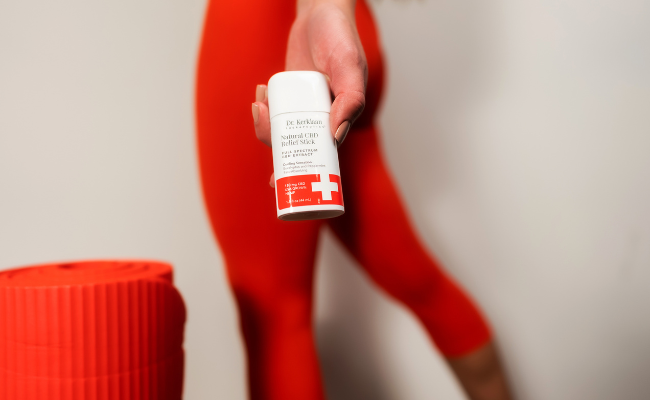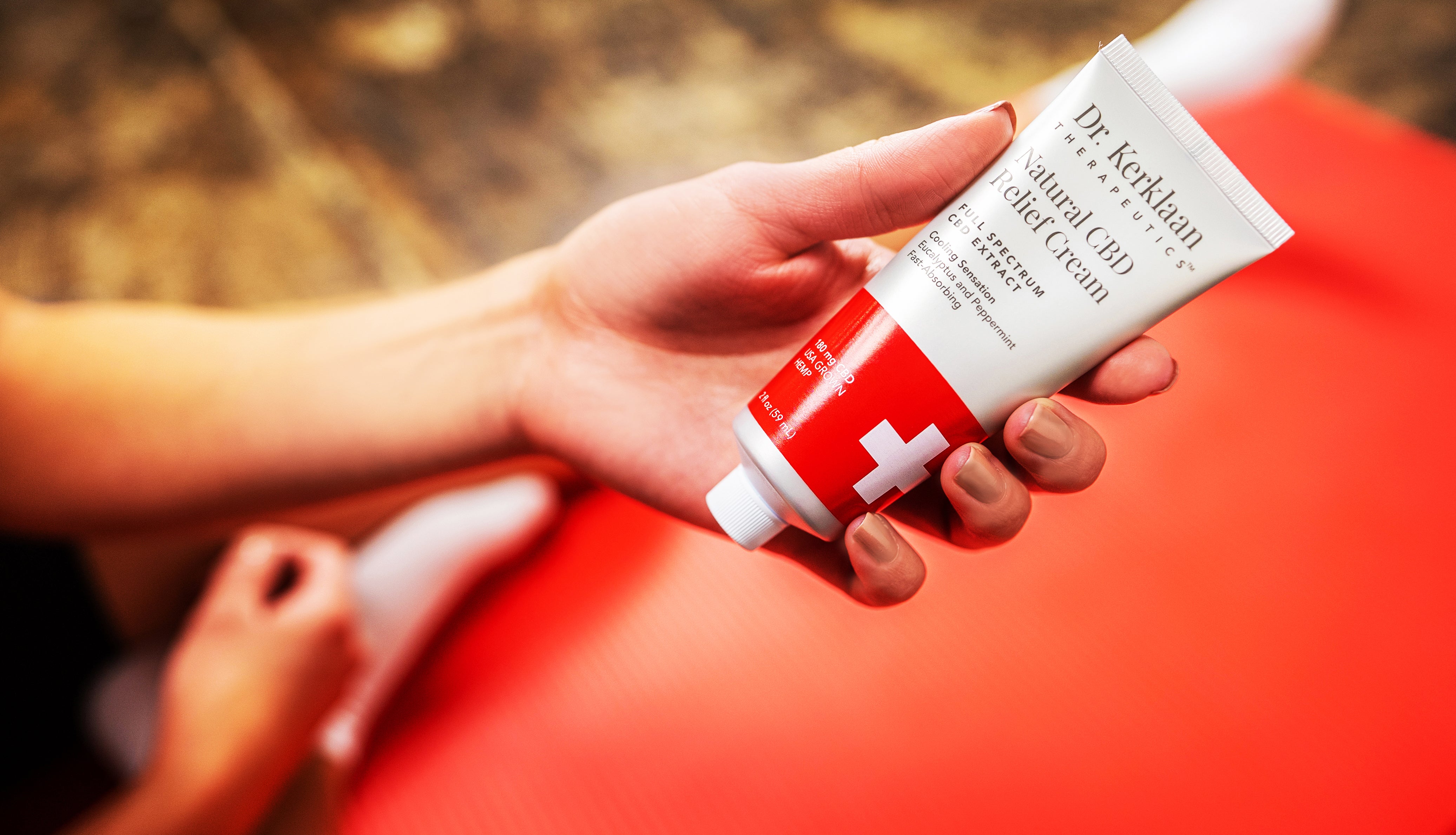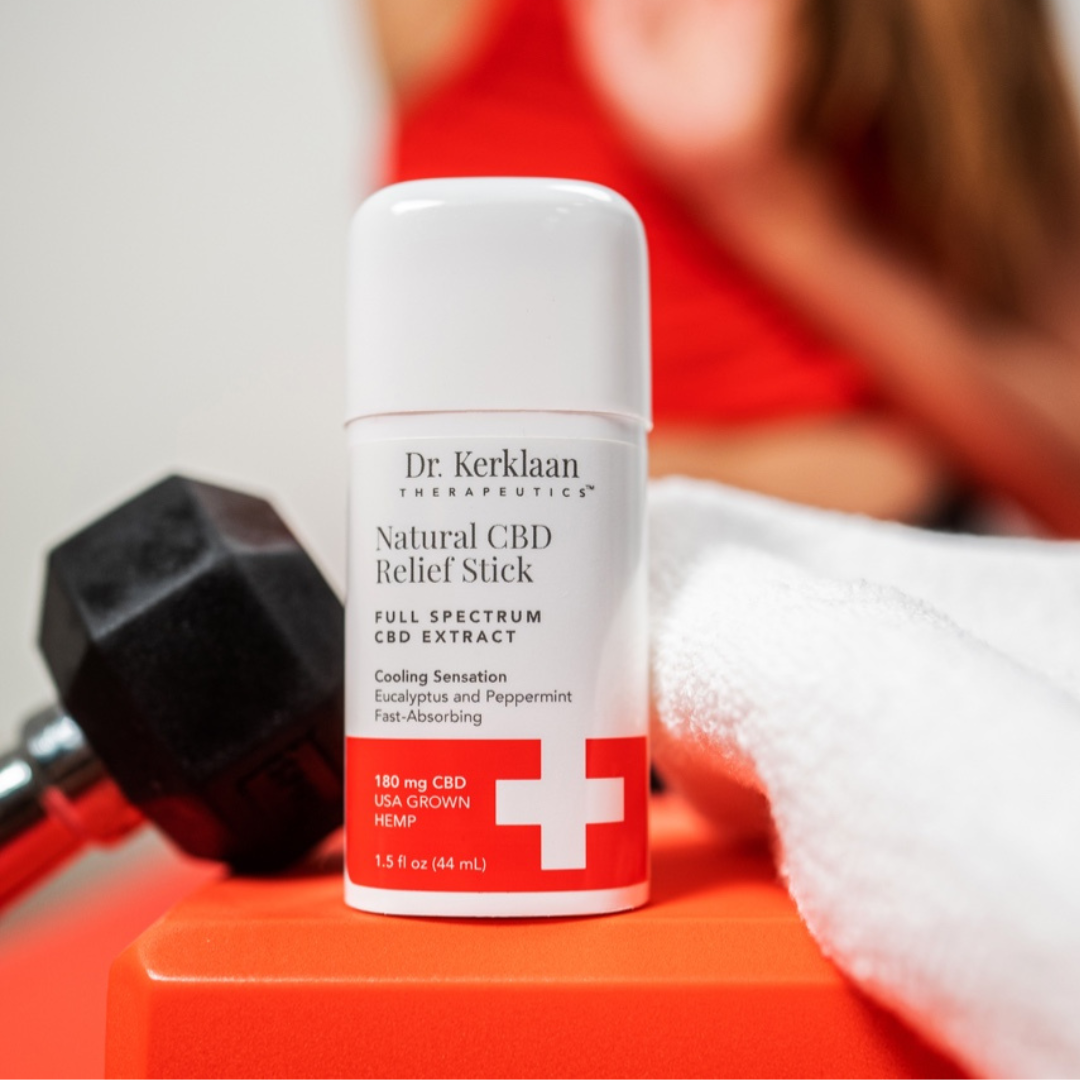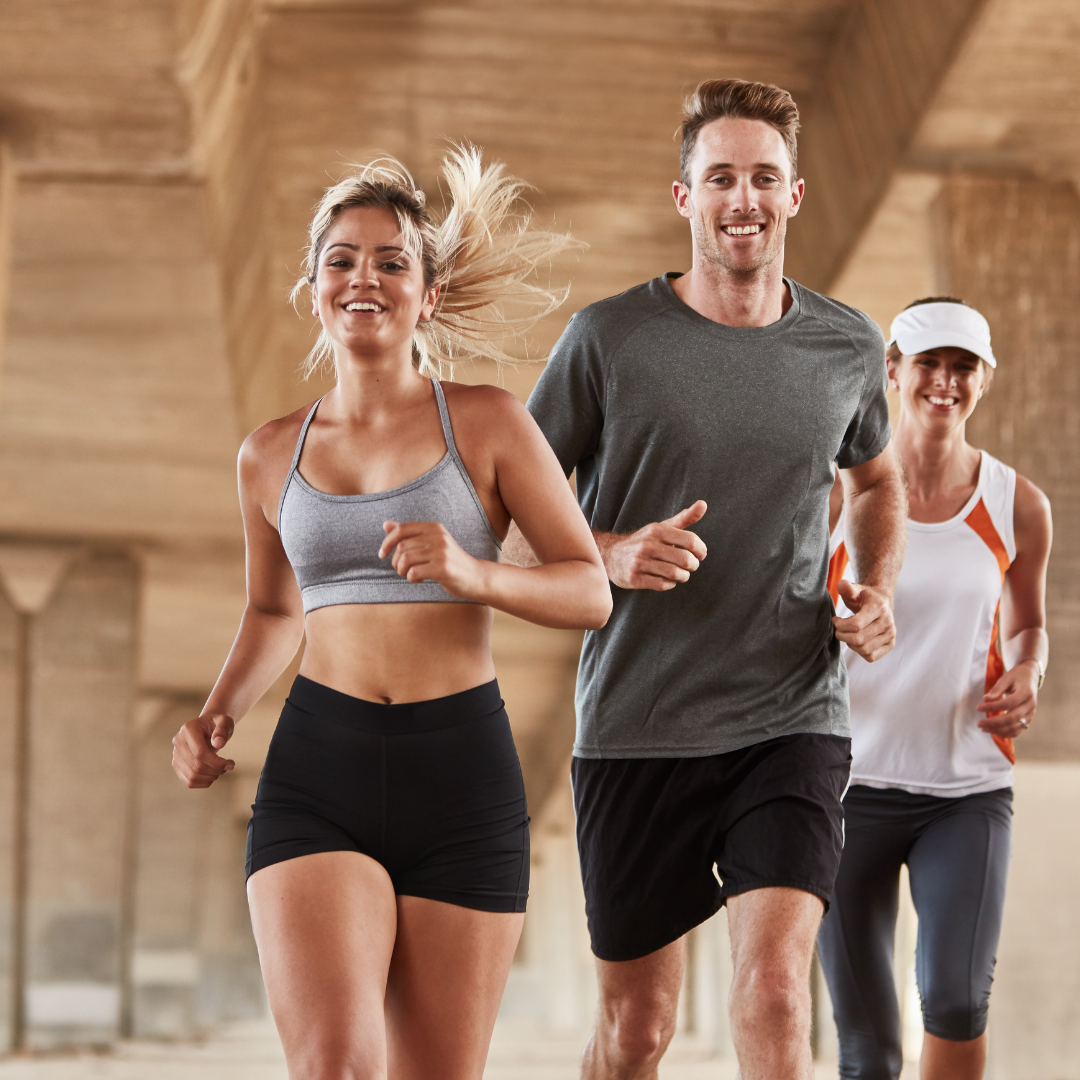
⏱️ 4 min read
Staying in the Game: Preventing Pickleball Injuries and the Role of CBD Topicals
We’re in a Pickle: Why Pickleball Injuries Are on the Rise
If it feels like everyone is playing pickleball these days, you’re not wrong! The sport has exploded in popularity, especially among active adults and seniors looking for a fun, social way to stay fit. Courts are packed, tournaments fill up fast, and if you’re not already playing, you probably know someone who is. According to the Sports & Fitness Industry Association (SFIA), pickleball is officially the fastest-growing sport in America—boasting an incredible 223.5% growth over the last three years (1).
But while pickleball may be billed as a “low-impact” sport, that doesn’t mean it’s injury-free. In fact, as more people take up the game, injuries are becoming increasingly common. Tweaked knees, sore shoulders, and overworked joints can sideline players, sometimes for weeks. The good news? With the right approach to injury prevention—including stretching, smart recovery techniques, and tools like CBD topicals—you can stay on the court longer and pain-free.
So, what are the most common pickleball injuries? How do they compare to other sports? And most importantly, what can you do to avoid them?
How Common Are Pickleball Injuries? A Look at the Numbers
Pickleball is often seen as a safer alternative to high-impact sports like tennis and repetitive motion sports like golf and jogging. But the injury rates—especially for older players—tell a different story, highlighting several common injuries associated with the sport.
A 2021 study published in Injury Epidemiology, found that over 19,000 pickleball-related injuries are treated in U.S. emergency rooms each year (2). Surprisingly, about 86% of these injuries involve players over 60. Compared to tennis, which has similar movement patterns, pickleball has been found to have a higher proportion of acute injuries among seniors, likely due to the rapid lateral movements, quick stops, and repetitive swinging motions.

Most Common Pickleball Injuries
- Sprains and strains – Often due to sudden changes in movement or overuse.
- Fractures – Usually resulting from falls, particularly wrist fractures.
- Tendonitis – Common in the elbow, shoulder, or Achilles tendon due to repetitive swinging or pivoting.
- Knee injuries – Including meniscus tears from sudden stops and twists.
- Lower back pain – Often linked to poor posture and excessive bending.
- Knee injuries – Including meniscus tears from sudden stops and twists.
- Concussions – Though rare, falls can lead to head injuries if proper precautions aren’t taken.
This list might sound intimidating, but don’t worry—pickleball’s benefits far outweigh the risks. The key is knowing how to protect yourself so you can stay active and injury-free.
Understanding Pickleball Injuries
Pickleball injuries can be a common occurrence, especially for those who are new to the sport or have a history of injuries. Understanding the types of injuries that can occur and how to prevent them can help players enjoy the game while minimizing the risk of injury.

Common Types of Pickleball Injuries
Pickleball injuries can be broadly classified into two categories: acute injuries and overuse injuries. Acute injuries occur suddenly, often as a result of a fall or sudden movement, while overuse injuries develop over time due to repetitive strain on a particular area of the body.
How Pickleball Injuries Compare to Other Sports
Pickleball injuries are common, but how do they stack up against other popular sports like tennis and golf in terms of common injury types? For players weighing their options, it’s important to understand the different types of risks each sport presents.
Pickleball vs. Tennis: Key Injury Differences
Both pickleball and tennis require quick reflexes, lateral movement, and repetitive swinging, but their injury patterns differ. Research shows:
- Tennis players are more prone to elbow and shoulder injuries due to the sport’s longer rallies and powerful overhead swings (3).
- Pickleball players, on the other hand, experience more falls and lower-body injuries like lower back pain, likely due to the game’s faster reaction times, shorter court, and sudden stops (4).
For seniors, the difference is even more pronounced—a study found that the injury rate among senior pickleball players was 150% higher than that of senior tennis players, primarily due to falls (4). This underscores the importance of proper preparation, warm-ups, and safety measures to stay injury-free.
Pickleball vs. Golf: Which Puts More Strain on the Body?
While both sports are hugely popular among older adults, pickleball’s faster pace and quick lateral movements make it more physically demanding than golf.
- Golf injuries tend to stem from repetitive strain, with issues like lower back pain from bending and twisting or “golfer’s elbow” (medial epicondylitis) caused by repeated swings.
- Pickleball, in contrast, leads to more acute injuries like sprains, strains, and falls.
Both sports come with their risks, but understanding these differences can help players take the right precautions - whether it’s improving flexibility for pickleball or strengthening the core for golf.
How to Stay in the Game: Injury Prevention for Pickleball Players
Too many players rush onto the court without warming up, increasing their risk of muscle injuries, strains, and sprains. A dynamic warm-up is essential to prepare your muscles, improve flexibility, and reduce injury risks. Try these simple pre-game movements:
1. Warm Up Properly - Every Time
- Arm circles & shoulder rolls – Prepares your arms for overhead shots.
- Lunges with torso twists – Loosens up the lower back and hips.
- Light jogging or jumping jacks – Gets your blood flowing.
- Ankle & wrist rotations – Helps prevent sprains and joint stiffness.
2. Strength and Balance Training to Prevent Overuse Injuries
Pickleball requires quick lateral movements and sudden stops, so strengthening your lower body, core, and stabilizing muscles can greatly reduce injury risk. Strength and balance training can also help prevent overuse injury by ensuring that muscles are well-conditioned and can handle repetitive motions.
Off the court, incorporate:
- Squats & lunges – Builds leg strength for agility.
- Planks & core exercises – Improves stability and prevents back injuries.
- Resistance band work – Enhances shoulder and arm endurance.
- Single-leg balance exercises – Reduces fall risk.
3. Wear the Right Shoes (Not Just Any Sneakers!)
One of the most common mistakes pickleball players make? Wearing running shoes instead of court shoes, which are designed to support sudden movements. Running shoes are built for forward motion—not the side-to-side movements that pickleball demands. Investing in proper court shoes can reduce ankle injuries and improve traction on the court.
Look for:
- Shoes with non-marking, high-traction soles
- Lateral support to prevent ankle rolls
- Cushioning to absorb impact and reduce joint stress
Here are some great examples that have become popular within the sport:
- Diadem Court Burst – Durable and designed for lateral stability.
- K-Swiss Express Light - Lightweight with excellent grip.
- Babolat Jet Mach 3 - Popular among competitive players for speed and support.
4. Listen to Your Body & Take Rest Days
Ignoring aches and pains can put you on a fast track to chronic injuries. As an example, ignoring shoulder pain can lead to chronic rotator cuff injuries, which are common in sports involving repetitive arm movements. If you feel discomfort, rest before it turns into something serious. Taking rest days is crucial to prevent severe injury, which can result from pushing through pain and fatigue. Overuse injuries like tennis elbow, Achilles tendonitis, and knee strains often start small but worsen without proper care.
For common pickleball strains and injuries, follow the R.I.C.E. method (Rest, Ice, Compression, Elevation) for minor sprains and strains.
5. Hydrate & Eat for Recovery
Dehydration leads to muscle cramps, fatigue, and slower recovery. Drink plenty of water before, during, and after play. Also, fuel your body with anti-inflammatory foods like:
- Leafy greens – Supports joint health.
- Nuts & seeds – Helps reduce inflammation.
- Omega-3-rich fish (salmon, tuna) – Aids muscle recovery.
By taking these simple steps, you can prevent injuries, recover faster, and keep playing the game you love. Now, let’s explore how CBD topicals can be a game-changer for pain relief and recovery.
6. Physical Therapy and Rehabilitation for Pickleball Injuries
Consider professional help from a chiropractor, physiotherapist, or massage therapist if pain lingers. Catching issues early prevents long-term damage. Physical therapy and rehabilitation can be an important part of recovering from a pickleball injury. A sport chiropractor or physical therapist can help players develop a rehabilitation plan that includes exercises and stretches to improve strength, flexibility, and range of motion.
In addition to treatment, your therapist can also help you take steps to preventing injuries from occurring in the first place. These include more specific advice tailored to your situation to cover warm up routines before play, using proper technique during play, and recommendations of regular break intervals, rest and stretch schedules, and nutritional advice.
By understanding the types of injuries that can occur in pickleball and taking steps to prevent them, players can enjoy the game while minimizing the risk of injury.
How CBD Topicals Can Help Prevent and Treat Pickleball Injuries
Pickleball may be fun and fast-paced, but it can also take a toll on your body. Whether it’s sore joints, muscle strains, or inflammation, staying on the court requires proper recovery.
CBD (cannabidiol) has gained attention for its potential benefits in reducing inflammation, relieving pain, and promoting muscle recovery—all essential for athletes, including pickleball players (5).
CBD topicals can be particularly effective for upper extremity injuries, such as those affecting the shoulders and elbows. CBD topicals, like Dr. Kerklaan Therapeutics Natural CBD Relief Cream and Natural CBD Relief Stick, can provide targeted relief right where you need it, making them a smart addition to any player’s routine. Keep a tube in your gym bag and use it before play, post-game, or as part of your recovery regimen to stay pain-free and on the court longer.

1. Reducing Inflammation Before and After Play
Repetitive motions in pickleball - like quick pivots, swings, and lunges can lead to inflammation in joints like the knees, elbows, and shoulders. CBD interacts with the body’s endocannabinoid system (ECS) to help regulate inflammation naturally.
- Pre-game: Applying a CBD cream may help reduce stiffness and improve mobility before you hit the court.
- Post-game: Using CBD topicals after play may help aid muscle recovery and reduce soreness, helping you bounce back faster.
2. Alleviating Pain Without Harsh Medications
Many athletes turn to NSAIDs (like ibuprofen) for pain relief, but long-term use can lead to digestive issues or kidney problems and even skin irritation. CBD topicals offer a natural alternative by delivering pain-relieving properties directly to affected— areas without systemic side effects.
3. Improving Blood Flow and Muscle Relaxation
Some CBD creams, including Dr. Kerklaan Therapeutics Natural CBD Relief Cream, feature additional ingredients like peppermint, and eucalyptus, which:
- Create a soothing cooling sensation to relax tight muscles.
- Promote circulation, reducing muscle cramps and stiffness after intense play.
4. Speeding Up Recovery from Minor Injuries
For those recovering from a minor strain or sprain, CBD topicals may speed up healing by reducing swelling and promoting repair. Combining CBD with a proper stretching and strengthening routine can help players return to the court faster.
Play Smart, Stay Active, and Keep Enjoying Pickleball
Pickleball is more than just a trend—it’s a fantastic way to stay fit, social & and a fun way to stay active at any age. But staying in the game requires proper preparation, injury prevention, and recovery strategies.
By warming up properly, strengthening key muscles, wearing the right gear, and listening to your body, you can significantly reduce your risk of injury.And for those looking for an extra edge in recovery and pain management, a CBD topical like our Natural CBD Relief Cream and Natural CBD Relief Stick offers a natural, effective solution to keep joints and muscles feeling their best.
So grab your paddle, hit the court, and play smart—because staying active and pain-free is the key to staying in the game and enjoying pickleball for years to come!
References
- Sports & Fitness Industry Association. (2024, November 14)
- Weiss, H., Gatt, C. J., & Gatt, T. P. (2021). Non-fatal senior pickleball and tennis-related injuries treated in United States emergency departments, 2010–2019. Injury Epidemiology, 8(1), 27.
- Chung, K. C., & Lark, M. E. (2017). Upper extremity injuries in tennis players: Diagnosis, treatment, and management. Hand Clinics, 33(1), 175–186.
- Forrester MB. Pickleball-Related Injuries Treated in Emergency Departments. The Journal of Emergency Medicine. 2019;58(2).
- Rojas-Valverde, D. (2021). Potential role of cannabidiol on sports recovery: A narrative review. Frontiers in Physiology, 12, 722550.

by
Dr. A. Kerklaan, DC
Dr. Kerklaan is the founder of Dr. Kerklaan Therapeutics and a leader in natural wellness solutions. With over 20 years of experience in health and wellness, he combines science and innovation to create effective, high-quality therapeutic products. Passionate about helping people feel their best, Dr. Kerklaan continues to bridge the gap between natural care and modern science.
Sign up for our newsletter and get 15% OFF your first order!
You May Also Like
Why Dr. Kerklaan Therapeutics?

Doctor Designed

Safe

USA Grown

Non Phychoactive

100% Free From

Natural Relief






